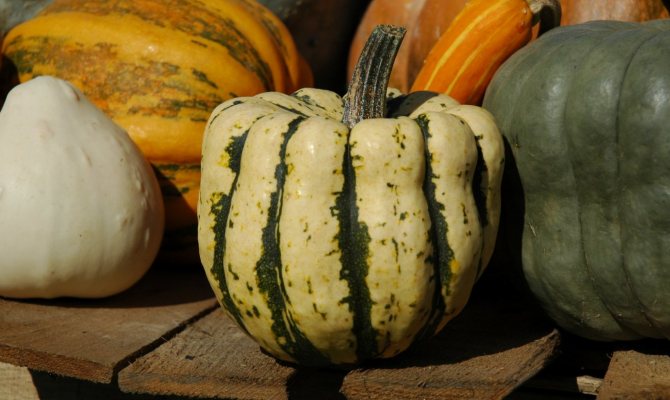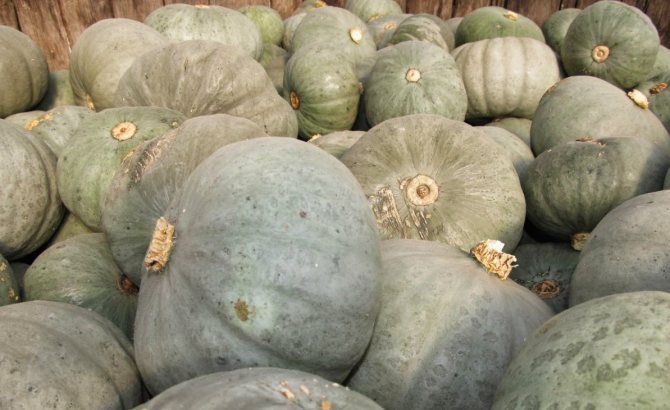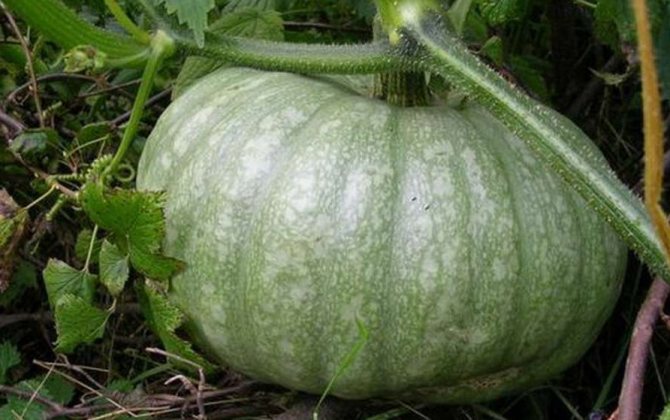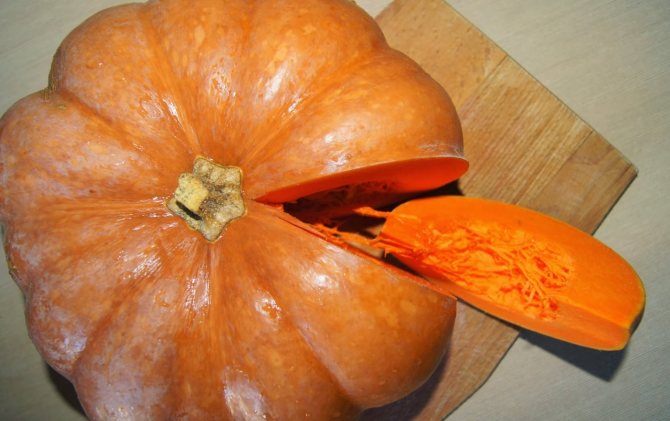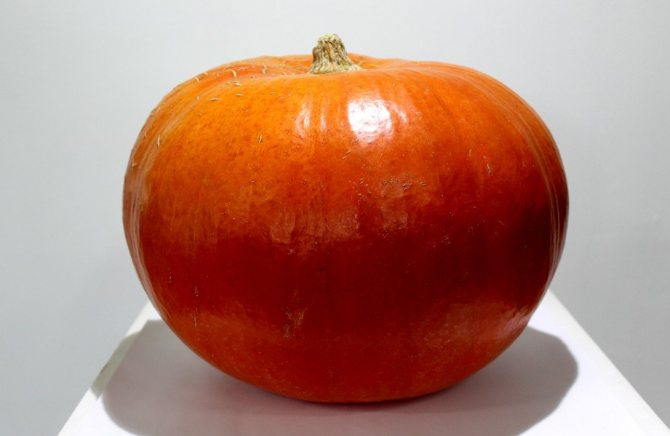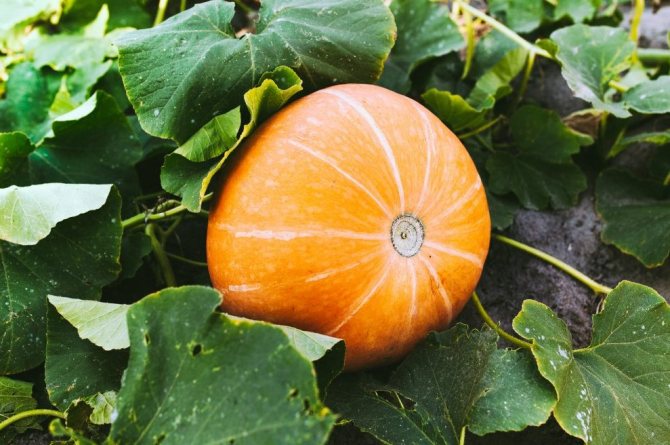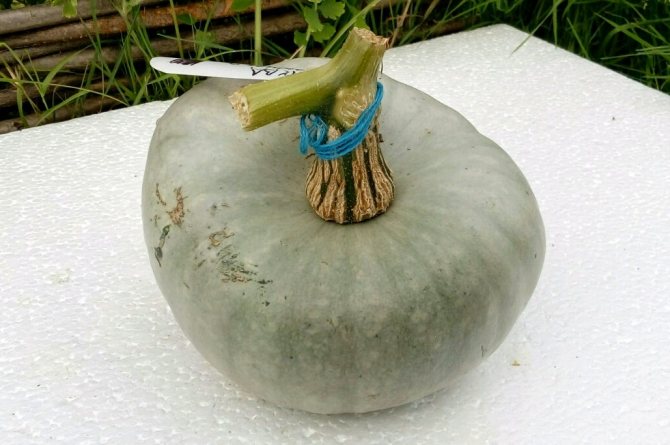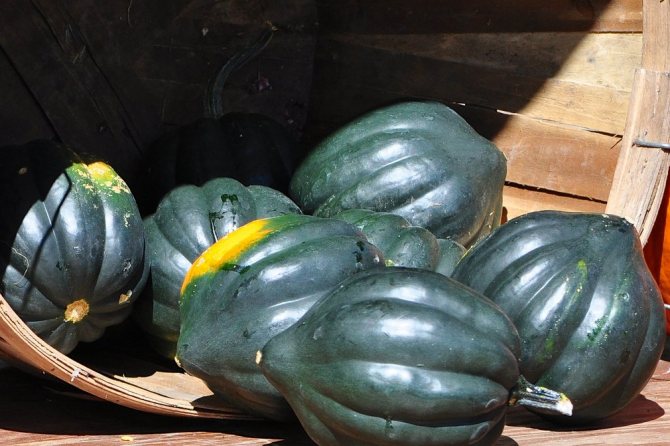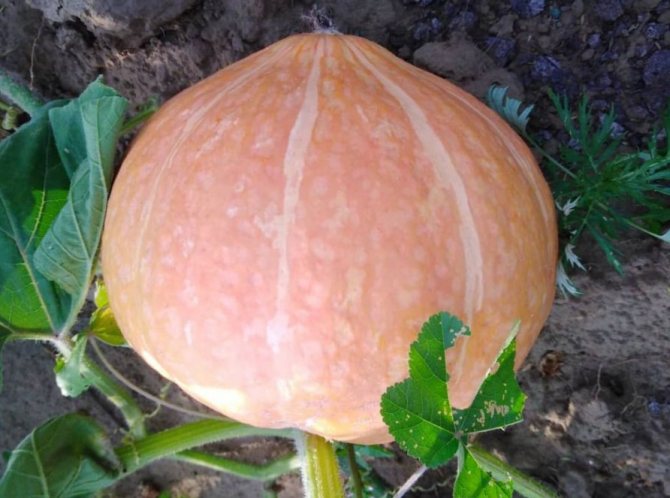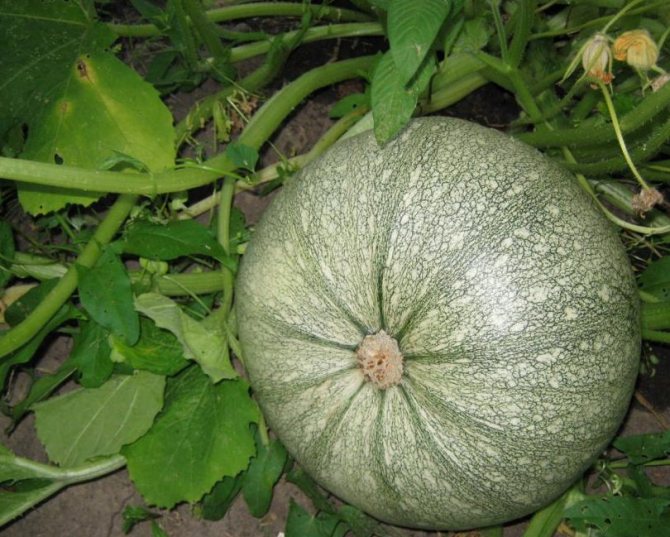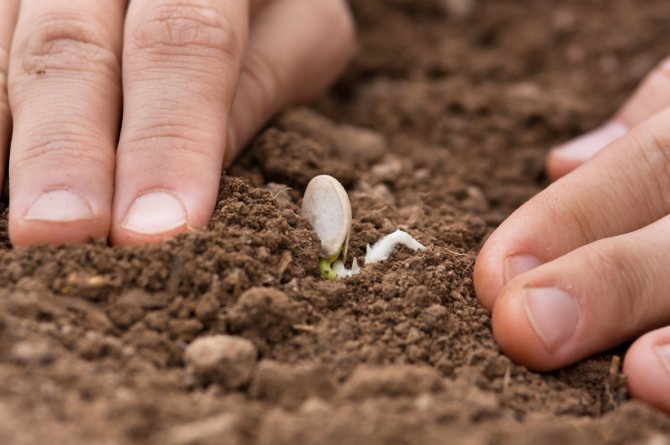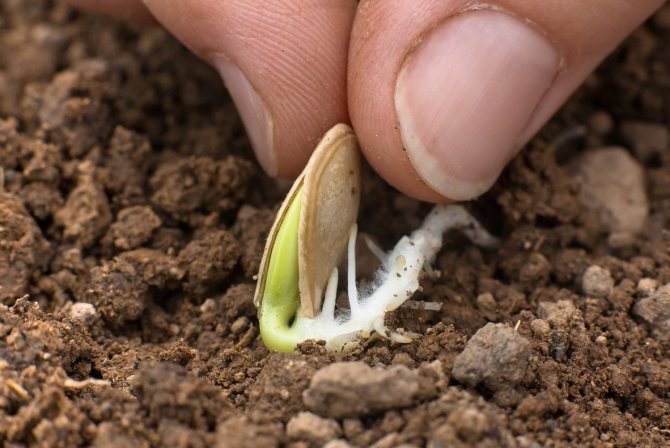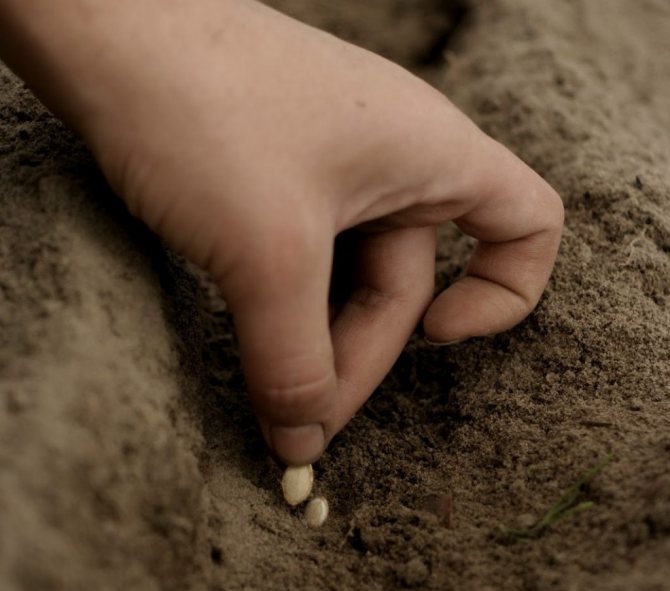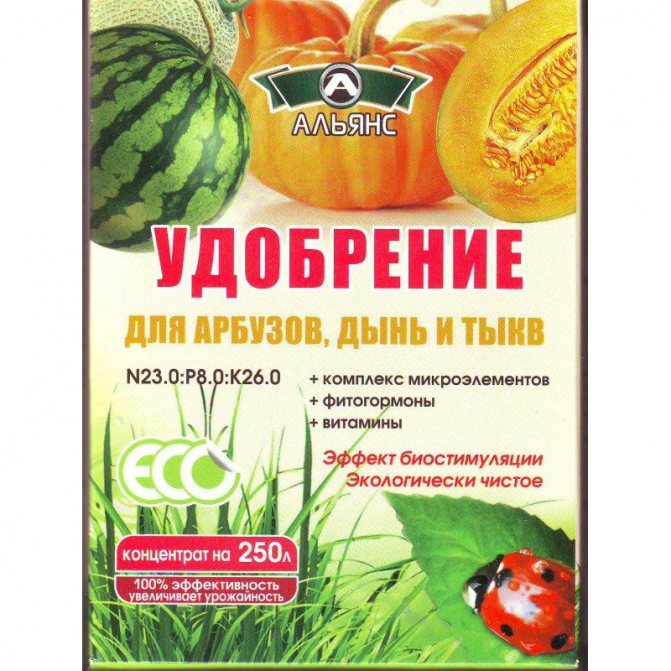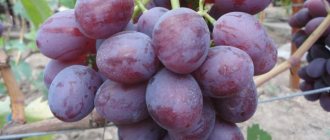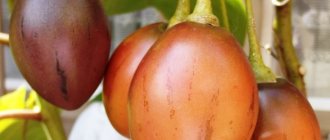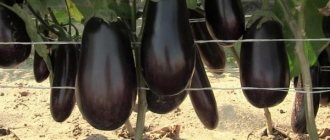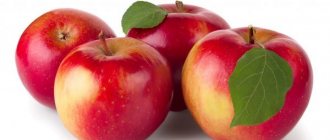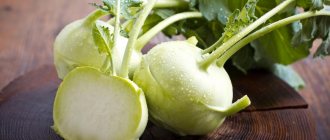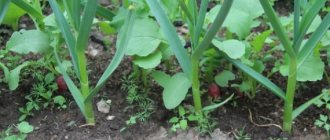Butternut pumpkin: description of varieties
Growing a pumpkin is a rewarding experience as the culture does not require complex maintenance. Among the variety of varieties, you can choose pumpkins with different ripening periods, aroma and taste of pulp, fruit size, disease resistance and keeping quality.
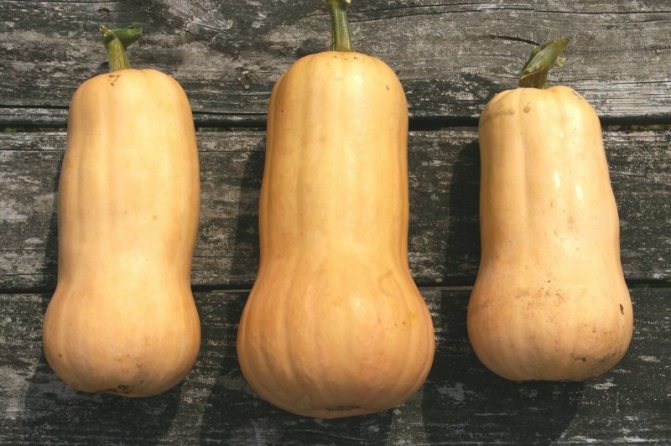
Popular butternut pumpkin varieties:
- "Gelei". This variety has smooth, dark orange fruits that come in a variety of shapes (spherical, cylindrical, or oval). Fruit weight over 9 kg.
- "New". The variety has oblong, light orange fruits that are narrowed in the middle and widen downward. On average, the weight of the fruit is 4 kg. The variety belongs to the mid-season, is well kept.
- "Muscat". The variety is late ripening with oblong, light orange fruits. This pumpkin has a high carotene content and is recommended for dietary, baby food and juicing.
- "Vitamin". Mid-season butternut squash, green skin color. The pulp is orange-red, the weight of ripe fruits is up to 7 kg. The fruits are used in any form, even raw, mixing the grated pulp with apple and sugar.
- "Pearl". It has an oblong shape, orange peel with green streaks. Muscat pumpkin "Pearl" has fruits weighing up to 8 kg, tender and fragrant orange pulp.
- Mirani di Chioggia. The fruits of this pumpkin variety, green in pimples, can weigh up to 10 kg. They look scary, but they have a sweet, aromatic flesh.
If the description of the pumpkin variety contains information that it is of medium or late ripening, it is advisable to grow the plant through seedlings. So that the crop in the beds has time to ripen, the finished seedlings are planted in open ground in May.
Most popular varieties
Hokkaido pumpkin - the plant is grown in areas with a temperate climate. The flavors may resemble a nut. Pumpkin fruits are in high demand, most likely due to their long shelf life, size and taste. The vitamin base of such a pumpkin has a wide range of useful microelements. Plants can be grown both in the garden and at home.
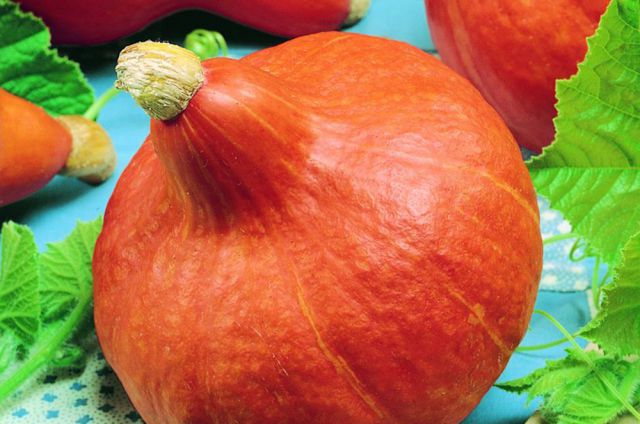

Hokaido pumpkin
Fig-leaved pumpkin - according to the botanical description, this plant is an annual type. In practice, fig-leaved pumpkin can grow for more than one year. Ficifalia leaves (second name) visually resemble fig leaves. Fig-leaved pumpkin has special large black seeds. The bloom is bright, the shape of the fruit is oval. By itself, the pumpkin is figurative, tasty and long-lasting. The stems resemble weaving ropes - hard and long (up to 25 meters). Only the figurative pumpkin has white or green fruits and characteristic long tines.
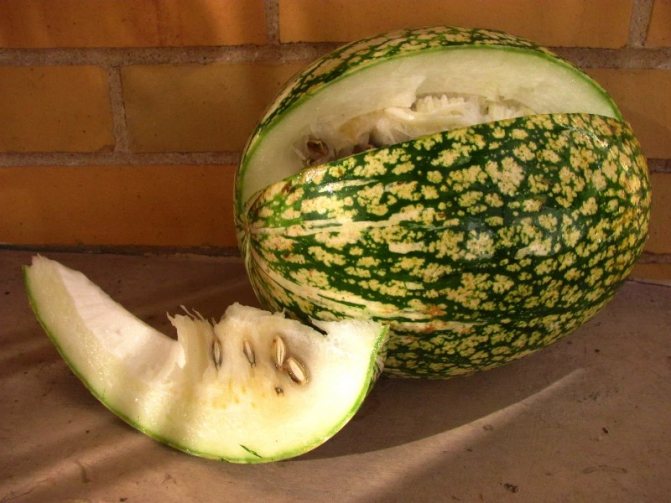

Fig-leaved pumpkin
Pineapple pumpkin - has similar flowering and fruit with the Matilda pumpkin. The plant is fruitful, the whips of one planting can bear 5-7 fruits. The vitamin structure is very peculiar and includes up to 7 types of vitamins of different groups. The crust is smooth to the touch, the weight of the pumpkin reaches 4 kilograms.
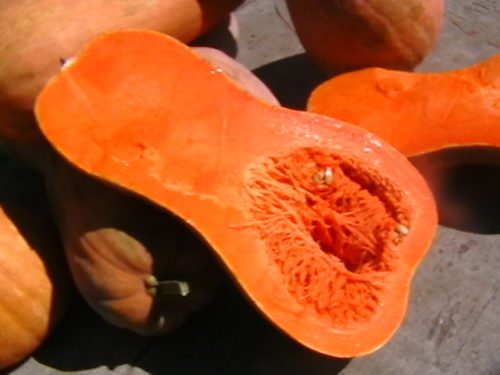

Pumpkin "Pineapple"
Volga gray pumpkin - during storage of this variety, certain chemical processes occur inside the fruit, as a result of which starch is converted into sugar. As a result, the fruits are sweet and soft. It is used for making homemade desserts or as a filling for baking.The color is directly related to the name, shades of green are possible. The mass of one fruit is 6-9 kilograms. The crust has a smooth surface and various segments. It is recommended to plant the plant at an earth temperature of about 13 degrees, and collect at the end of summer. The presented variety has a high yield.
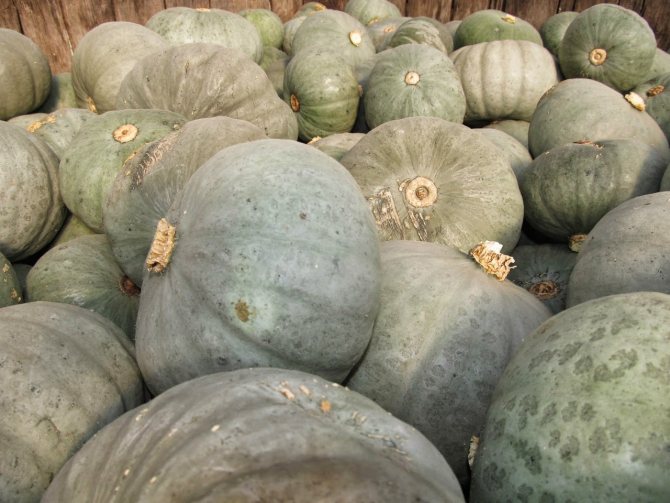

Pumpkin "Volzhskaya gray"
Medicinal pumpkin - a variety that is appreciated for its taste and, according to many people, has medicinal properties. Grown in mild and warm climates (but cold resistant). It is often used in the preparation of diets for people with gastrointestinal problems. It can act as a cosmetic product, as a component for masks, shampoos and others.
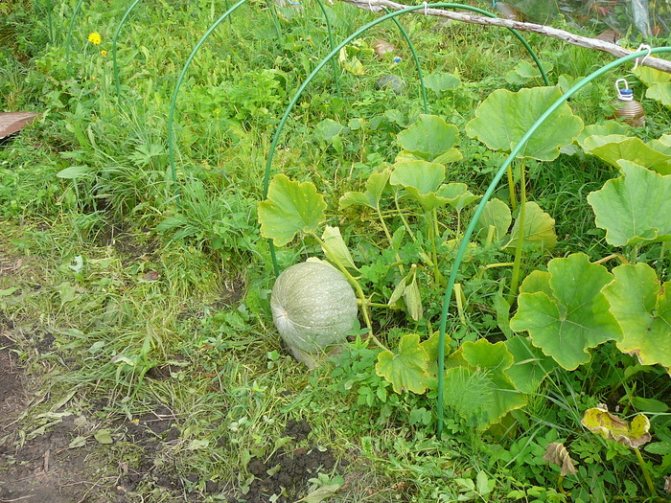

Pumpkin "Healing"
Sweet winter pumpkin - recommended for squeezing juice. Scourge plants are of medium length, and everything can reach 8 kilograms. The color of the fruit is gray, and the flesh is yellow or orange. Blooms closer to autumn, storage does not cause problems.
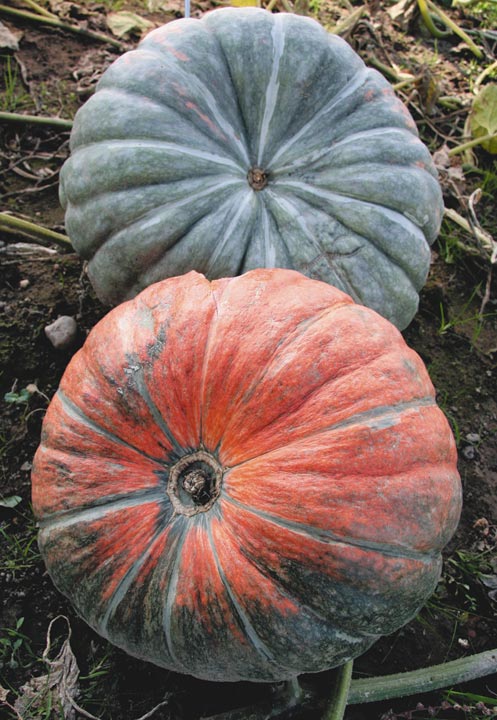

Pumpkin "Winter sweet"
A guitar-type pumpkin is a type of butternut squash, reaching up to 1 meter in size. The pulp has a rich taste. The name "guitar" is associated with the shape of a pumpkin very much like a musical instrument. Summer residents appreciate the guitar variety for its long shelf life.
Pumpkin "guitar"
The main nuances of growing
The butternut squash, which is grown in a similar manner to the common varieties, still requires more care and attention. Its fruits will be eaten, so good watering and feeding is important.
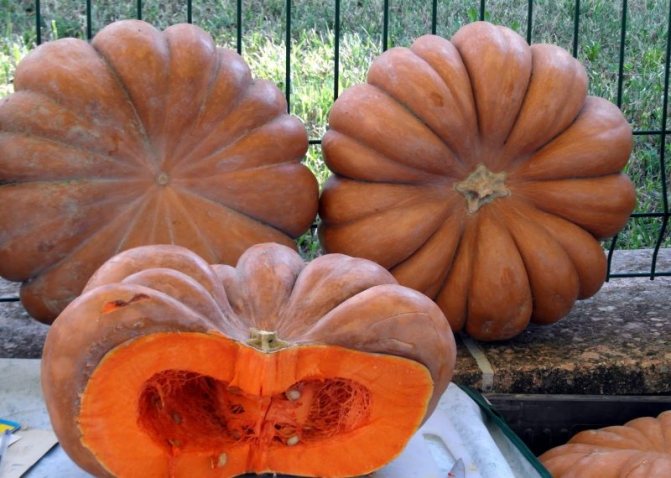

To prevent the pumpkin from “fattening”, growing only green stems and leaves, it is necessary to feed it only at the initial stage of seedling development and after the ovaries appear.
For pumpkin to be tasty, it needs potassium.
You can feed the plant with ash. To do this, dissolve in 1 bucket of water 1 or 2 tbsp. ash, insist for a day and water the pumpkin. There are potash fertilizers on sale that can also be used for feeding.
It is advisable to put wooden planks under the ripening fruits so that they do not start to rot. Extra lashes need to be cut off, leaving no more than 3 - 4 fruits on each shoot, and on dry days it is important not to forget to water.
How to grow
Pumpkin is a thermophilic culture. Caring for her is simple, although it has some features. Consider what should be done to get a delicious and beautiful harvest.
Site selection
For nutmeg varieties, land with a deep arable layer and loose soil is excellent. Many gardeners grow them on compost because it is warm and nutritious. If there is no compost heap, then prepare the beds.
To do this, set aside a warm and sunny place. Previously, the bed is dug up in the fall and all the garbage is burned. With the arrival of spring, the earth is dug up again and disinfected. A solution of copper sulfate is suitable for this. The liquid will destroy dangerous microbes and pathogens.
Also, farmers are advised to apply organic fertilizers. Before planting, an excellent option would be to fertilize the soil with an ash-based infusion. It will make the land more nutritious and healthy for the pumpkin, which will have a positive effect on the quality of the crop.
Seed preparation
When choosing seeds, pay attention to the integrity and appearance of the packaging. We advise you to buy them in specialized stores. After purchasing, inspect the seeds and check for germination. Pour them into a container of water and stir in a circular motion. Leave it on for 10 minutes.
Any seeds that remain on the surface should be thrown away because they are empty. Remove those specimens that have sunk to the bottom and dry thoroughly. They are also suitable for sowing.
Even purchased material is best disinfected. Boric acid is an excellent remedy. It is enough to soak the seeds in a solution at the rate of 0.2 g per 1 liter of water for two hours. The solution protects the pumpkin from fungal infections and increases yields.
Important! Don't forget to germinate your seeds. To do this, place them on a damp cotton pad and place in a warm place. Farmers advise the use of growth stimulants: for example, succinic acid protects against diseases, and sodium humate accelerates growth.
Care and feeding
Water the pumpkin in moderation, with the expectation of no more than 2.5 liters of water per bush. The optimum temperature for watering is about 18-22 degrees. It is best to moisturize the beds in the early morning or evening to avoid sunburn.
In humid and foggy summers, the amount of water is reduced so as not to overmoisten the plant. Sometimes liquid root fertilizers, such as a solution of nettle or ash, are added to the irrigation.
The beds are loosened every week, best done before watering. Loosening removes the hard top crust of the earth: it impedes the access of nutrients. Together with loosening, weeds are removed, which slow down the development of the bushes.
Pumpkin reacts positively to mineral complex fertilizers and organic substances. The most popular among gardeners are:
- "Nutriflex S" - contains magnesium, zinc and calcium, without which the normal development of vegetables is impossible.
- "Zircon" - increases yield by 10-15% and improves plant immunity to diseases and insect pests.
- "Micefit" - strengthens the root system, makes it more developed.
- Chicken droppings - contains nitrogen, potassium and phosphorus, which strengthen the stems and leaves.
- Ash solution - reduces the acidity of the soil and makes it easier for the plant to tolerate climatic changes. It is especially useful for growing and caring for butternut squash outdoors.
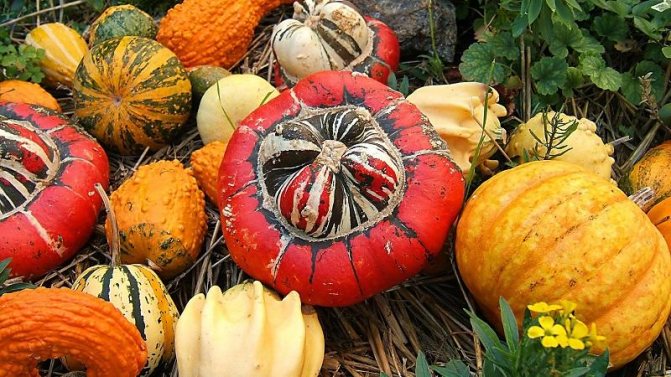

Lash formation
How to shape butternut squash? Lines are formed in mid-August for the early ripening of vegetables. They always reach for the sun, therefore they grow in a southerly direction. On long lashes, 4-5 pumpkins are formed at once, which do not have time to ripen in time.
Select the largest vegetables and tear off the remaining ovary. After each lash, pinch. With the help of the formation, the growth of the bush stops, and all the nutrition goes to the ripening of the pumpkin.
Important! As soon as the length of one lash becomes more than 1 m, it should be straightened and put on the garden bed, sprinkled with earth on top. This is necessary so that the long lashes do not injure the leaves and stems.
Planting butternut squash outdoors
Seeds of early maturing varieties of butternut squash can be sown directly in open ground in early May. Pre-prepare the site and soil.
The pumpkin cannot be grown in the shade - from this it loses in size and taste.
- Pumpkin loves fertile soil that allows air to pass through well.
- It cannot be grown on clayey soil that retains water.
- When planting, sand and fertilizers must be added to heavy soil.
Pumpkin seeds are advised to be planted outdoors in a raised bed, since the roots of the plant love warm soil. It is possible to enclose the poured earth with boards in the fall, cover it with a film, adding previously rotted compost, and in the spring, plant a pumpkin on such an elevated bed. She will feel great and grow.
Wax gourd (Benincasa hispida)
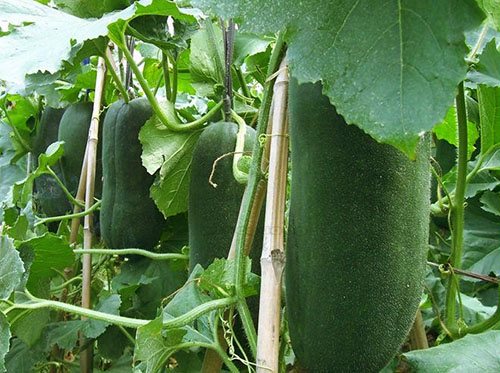

Elongated green pumpkins of this species were originally known only in the Southeast. But today the first varieties of pumpkin of the genus Benincasa hispida have appeared in Russia. Fruits of a dark green hue have an unusual dense bark that feels like wax.
The Chengzhou waxy gourd variety forms fruit ready to harvest 125-130 days after sowing. Pumpkins ripen on long, powerful lashes. The weight of each fruit reaches 6-15 kg, and its length ranges from 25 to 50 cm.
The milky pulp of this type of pumpkin can be used boiled, stewed or fried. For culinary purposes, both green pumpkins that have not reached ripeness and ripe fruits are used.As it ripens, pumpkin accumulates some sugar, but it cannot be compared to butternut squash. But the wax pumpkin is the record holder in terms of shelf life. Without loss of quality, fruits can lie for up to 2-3 years.
Useful tips for choosing a pumpkin - video
How to properly care for a pumpkin
To get a good harvest, pumpkin needs to be regularly watered, nourished, and protected from disease. It is also important to form the stem by pinching it when it reaches a length of 1.2 m. It is advisable to leave 2 or 3 lateral ones on the central shoot.
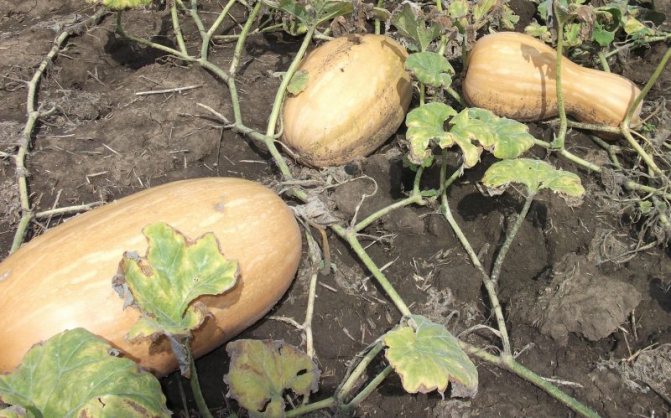

Water the pumpkin during the growth of the lashes, flowering and the formation of ovaries. It is especially important to moisten the soil when the fruit is being poured.
Once a week, pour about 20 or 30 liters of water onto each plant. A groove is made around the bushes and water is poured under the root, without spraying it over the leaves.
During the growing season, make 1 - 2 dressings:
- at the time of seedling growth, a full complex fertilizer is applied for melons and gourds;
- the second time is fed at the time of the appearance of the ovaries.
If the pumpkin is grown from seeds sown in open ground, when several seedlings appear in one hole, they are thinned out. At first, after watering, the soil is loosened around the bushes, weeds are pulled out. When the leaves grow, there will be no weeds or dry earth crust underneath.
What is a decorative pumpkin
The climbing annual plant is grown to decorate their backyards, as well as the facades of houses. In addition, pear-shaped pumpkin crafts will become a real decoration at children's exhibitions and festivals. Outwardly, she is very much like her garden cousin. It is not difficult to grow it.
Shoots grow very quickly and reach 2 m in length (although there are observations when the length reached 4 - 6 meters). But they are much thinner than that of the common pumpkin. There are also bush varieties that are planted along the terraces to decorate them with their appearance. The leaves of the decorative species are slightly thinner than those of the original. But, depending on the variety, the color and appearance may vary.
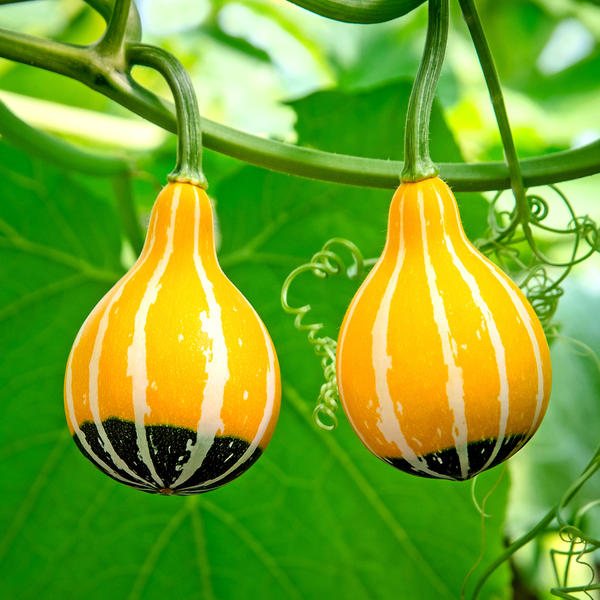

And as the shoot develops, white flowers will begin to appear on it, which will form the ovary of the future decorative pumpkin.
The fruits of this species usually have a size of no more than 10-15 cm in diameter. And during the summer season, from 20 to 40 small pumpkins can form on one shoot. But the most important thing is that all fruits have the most varied colors.
Therefore, many designers and stylists use this material to create truly unique masterpieces. And the gardeners themselves amaze guests with unusual creative developments. Just look at these photos.
Reproduction
Pumpkin propagates by seeds. They can be harvested from ripe fruits, which have grown to be the largest and most delicious, dried and stored until spring. In May, they should be sown in open ground in prepared beds.
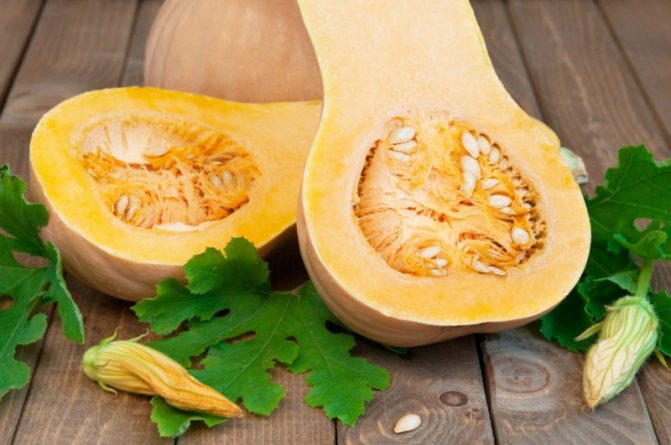

When propagating by seedling method, seeds are sown 1 - 2 pieces in each pot.
The soil is used loose and fertile. You can mix store-bought all-purpose soil with coarse sand.
- The seeds are placed at a depth of about 3 cm, the soil is moistened and covered with a bag or glass until shoots appear.
- Ventilate daily, maintain humidity.
- Sprouted seedlings are placed in a warm, bright place.
- After about a month, seedlings are planted in open ground.
There are a large number of hybrid varieties on the market. If these seeds are harvested and planted, the grown pumpkins will not inherit the traits of the parent plant. Therefore, the collection of hybrid varieties needs to be updated annually by purchasing seeds from the store.
Pumpkin seeds for parasites
Pumpkin seeds have anthelmintic properties - they are actively used to remove parasitic organisms from the human body.
To cleanse the intestines, you can take unfried pumpkin seeds in food and unlimited quantities in the absence of contraindications, or prepare a traditional medicine based on them.
For the mixture, you will need seeds, as well as honey or home-made jam. Crush about three hundred grams of seeds to a mortar to a state of gruel, add about two tablespoons of water or milk. Mix the ingredients and add a teaspoon of honey. Adults are advised to consume from one to one and a half glasses a day, and children half a glass once a day. You need to drink the gruel in a supine position in small portions for 120 minutes.
After four hours, you need to take a tablespoon of castor oil and give an enema.
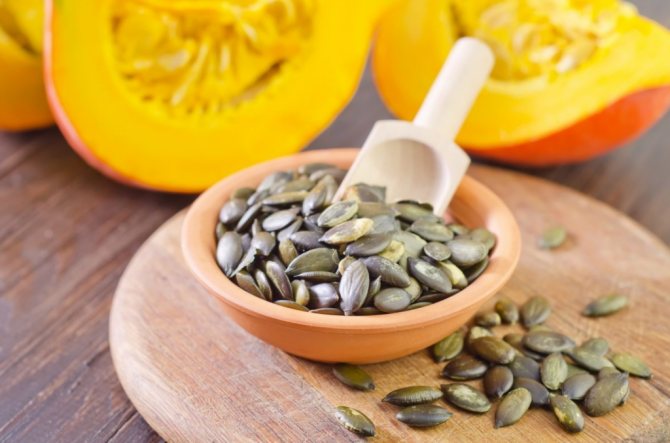

Pumpkin seeds have anthelmintic properties - they are actively used to remove parasitic organisms from the human body
Pests, diseases and prevention of their appearance
Viral, fungal and bacterial diseases are dangerous for pumpkin.
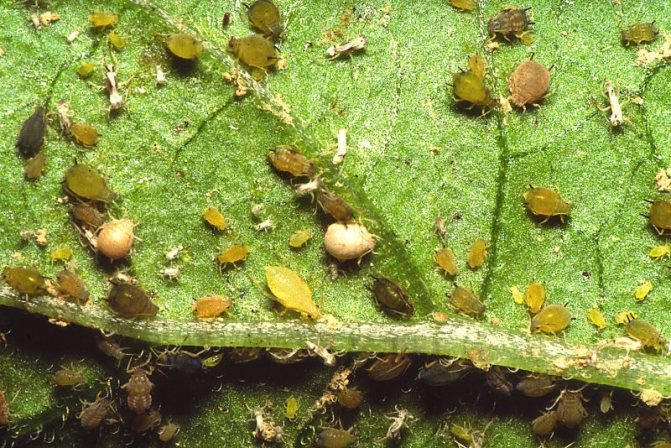

- With anthracnose, the leaves change color and dry, the fruits rot. Diseased plants are destroyed, and the rest are sprayed with Bordeaux mixture.
- With high humidity, powdery mildew spots may appear on the leaves. Plants are treated with sulfur-containing fungicides, and with downy mildew - with Bordeaux liquid or "Fitosporin".
- The future harvest is also threatened by insect pests - melon aphids and sprout flies. Sprout fly larvae can eat pumpkin sprouts and seedlings. Bioinsecticide "Virin-OS" is used for spraying.
Areas of application of pumpkin
Due to the content of a large amount of vitamins and useful elements, pumpkin has many medicinal properties and is widely used in traditional and folk medicine, cosmetology.
The use of pumpkin in medicine is recommended for the following diseases:
- with cystitis, nephritis, pyelonephritis;
- soothing for colitis;
- improves digestion and metabolic processes in diseases of the gastrointestinal tract;
- with insomnia;
- as a sedative for depression;
- with hypertension and cardiovascular diseases;
- with edema;
- flu, SARS as anti-inflammatory and strengthening the immune system;
- with reduced visual acuity;
- for the prevention of cancer;
- with liver diseases;
- thrombosis;
- inflammatory diseases.
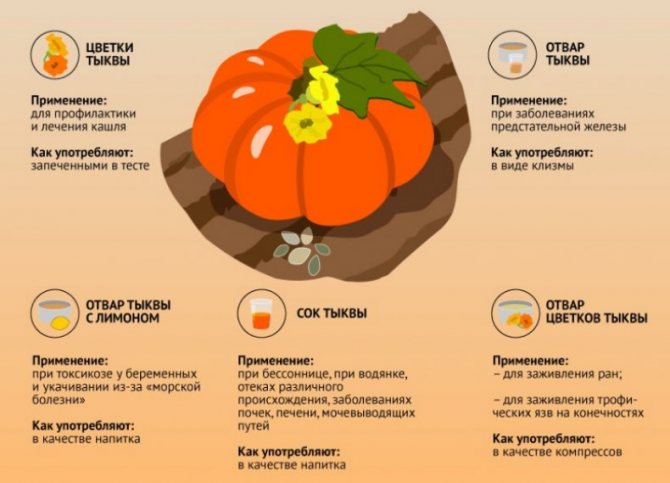

In the field of cosmetology, pumpkin is used to combat such ailments:
- allergic rash;
- eczema;
- acne;
- wrinkles;
- fistulas.
Did you know? It is scientifically proven that pumpkin seeds support sexual function in men and increase potency.
Collection and storage of vegetables
The harvest time depends on the pumpkin variety. Early maturing varieties ripen about three or three and a half months after seed germination, which occurs in August and early September. But early pumpkin varieties are not stored for a long time, it is better to start up them for processing - conservation, freezing, juicing.
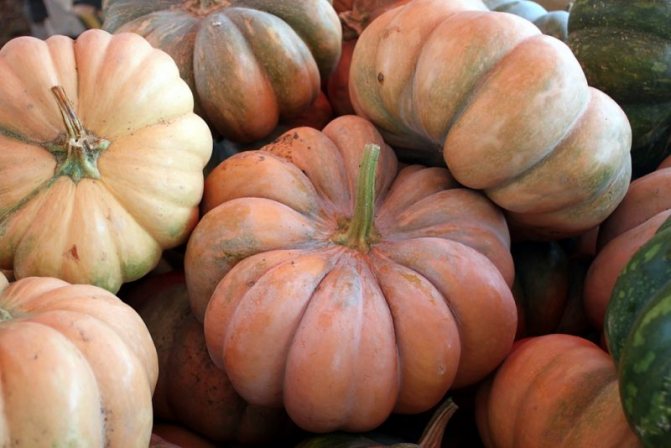

Mid-season varieties ripen about 4 months after planting. You can harvest the fruits from mid-September until frost.
Late-ripening varieties ripen up to 140 days after planting. Harvesting of such fruits begins from the end of September until the first frost. They can be stored for a long time in a dry, cool cellar in winter at temperatures from +3 to + 15 ° C. During storage, their taste only improves.
Collect the pumpkin as soon as the dahlia flowers begin to darken in the garden, at minus 1 ° C. She can tolerate small frosts. Pumpkin leaves begin to die off before you need to harvest the fruits, and there is no need to rush into harvesting. The longer the fruits lie in the garden, the tastier and larger they become.
Siberia and the Urals
The Urals and Siberia are the territory of Russia, where frosts last until mid-June. Taking this into account, it is necessary to choose planting material that can withstand cold and frost.
Read about growing tomato seedlings at home here.
Smile
The variety allows you to get the harvest ahead of time. Collecting pumpkin can take place within 3 months from the moment of germination. This plant grows as a bush, has a compact size and allows you to get a high yield.
With proper care, you can get 3 kg of pumpkin from one bush. The fruit has a thick orange peel. The pulp tastes sweet and juicy. The Smile variety has a long shelf life at room temperature.
Read about growing tomatoes in a polycarbonate greenhouse here.
Freckle
The variety tolerates sudden temperature fluctuations, therefore it is considered the most suitable for growing in Siberia. The fruits have a hard bark, and the pulp tastes like a melon. This variety is considered sweet, the flesh is crispy, and the mass of one fruit is not more than 3 kg.
Russian woman
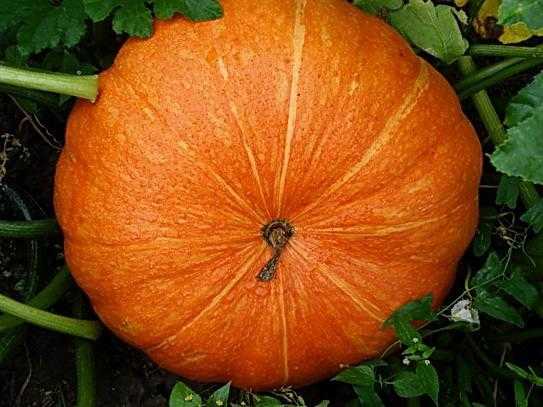

This culture is also great for planting in Siberia and the Urals. With proper care, you can get high yields.
You can find a list of the best varieties of tomatoes for a polycarbonate greenhouse at the link.
The plant has a strong immunity to all pests and diseases. For a Russian woman, cold and frost are not terrible. Ripe fruits are dark orange in color, and taste like a melon.
Siberia is a very special territory characterized by extremely long frosts. Frosts in this area continue until the first month of summer. This important factor must be taken into account when choosing a vegetable variety. The main qualities of the planting material for Siberia are frost resistance. Several varieties of pumpkin are ideal for these parameters.
Smile
Pumpkin variety Smile
The peculiarity of Smile is that this variety is not only cold-resistant, but also high-yielding. In addition, it is characterized by a short ripening period - after the sprouting of the first shoots, it takes only three months until the pumpkin can be eaten. At the exit, the farmer receives medium-sized (from half a kilogram to two kilograms) orange fruits with dense and sweet pulp. Pumpkin Smile can be stored until January - however, it is unlikely that it will "live" right up to winter - it is too tasty.
Pumpkin Seeds Smile
Initially, the Smile variety was bred as an ornamental variety, and it corresponds to its purpose. On the site, the plant looks spectacular - large leaves with an outstanding pattern, large bright flowers and an intoxicating aroma. And the fruits are a real work of art. A lot of them immediately appear in the garden - up to fifteen pieces. With proper care, the Smile variety gives up to three kilograms of fruit from one bush.
Pumpkin Smile - early ripening variety

